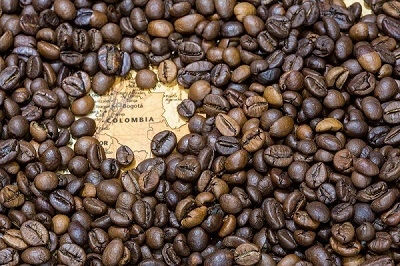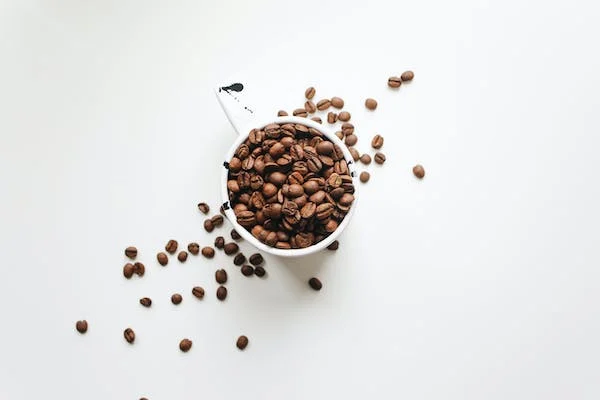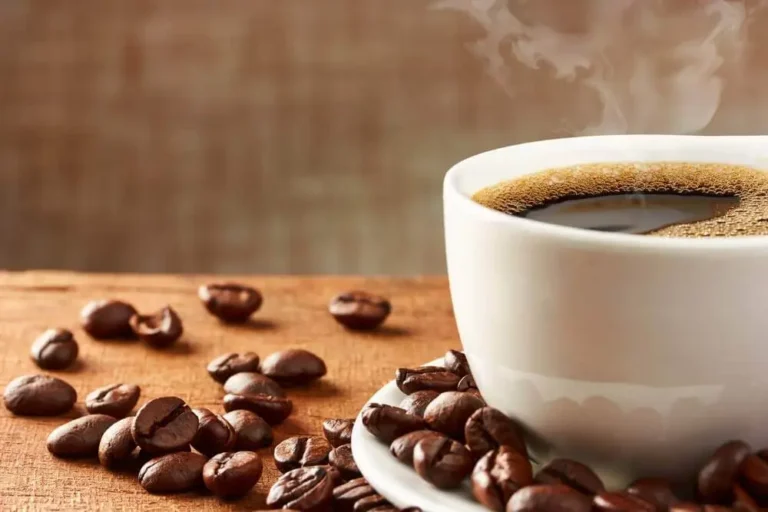4 Types of Coffee Roasts: A Perfect & Complete Guide
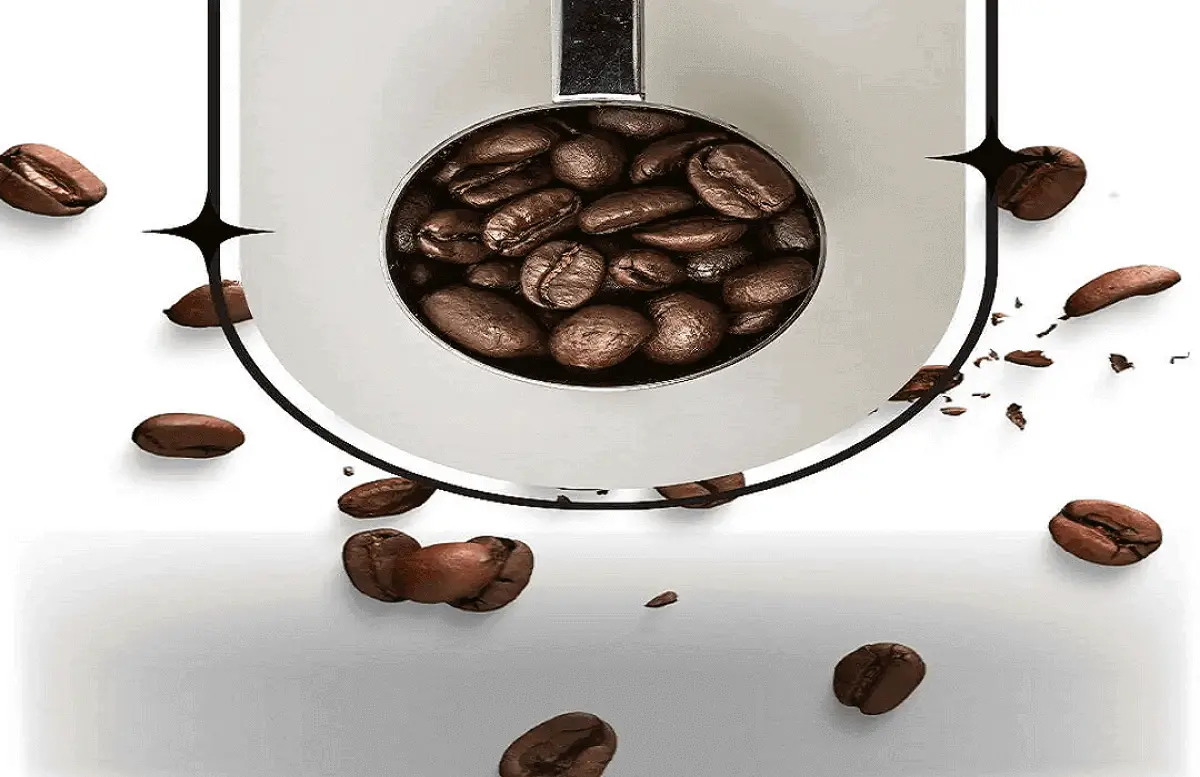
Navigating the world of coffee roasts can be confusing, Light, medium, medium-dark, and dark roast – what sets them apart? Don’t fret; Here I’ll give you a Complete Guide to the 4 Types of Coffee Roasts unravels the mystery.
Lets start to learn about the Types of Coffee Roasts. Generally, there are 4 types of coffee roasts which are light roasts, medium roasts, medium-dark roasts, and dark roasts. The major difference is flavor, aroma, and caffeine in types of coffee roasts.
Continue reading to find out everything you need to know about the 4 different types of roast coffee.
Various types of Coffee Roasts:
Coffee Roasts are categorized into four different types of coffee roasts, which are:
- Light roast
- Medium roast
- Medium-dark roast
- Dark roast
These various types of roasting produce coffee that smells, looks, and tastes very differently from one another.
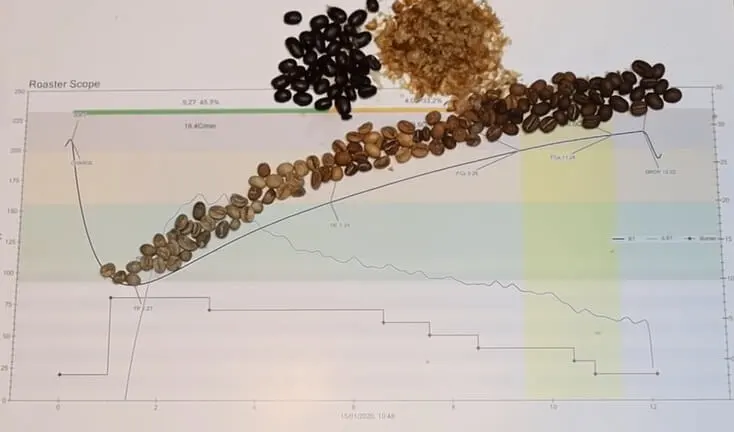
Why Roast Coffee Beans? When coffee beans are plucked fresh and green, their flavors and smells are enhanced by roasting. Green beans can be preserved without sacrificing their flavor or quality by roasting.
1. Light Coffee Roast Beans: Complete Guide
Light roast coffee, known for its brief medium-temperature roasting, boasts a non-oily surface and a delightful light brown hue. With an internal temp range of 180-205°C (356-401°F), this roast enhances milder coffee varieties.
When beans hit 205°C (401°F), it’s the ‘first crack’ – a sonorous sign of moisture release and flavor development.
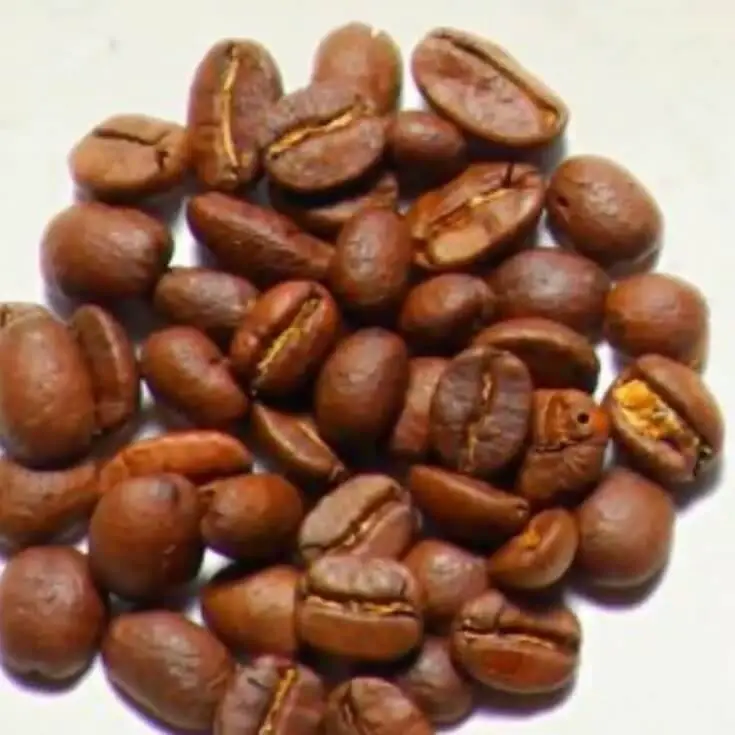
The Bright Side of Light Roasts Coffee beans
Light roast coffee beans, under shorter roasting periods, yield a rich and fresh taste.
Types of coffee roasts, like light beans, bring out more flavor but also increase acidity and caffeine while reducing aroma.
Their distinct source characteristics shine, making them a closer match for your taste buds.
Common Profiles of Light coffee Roasts Beans:
- Cinnamon Roast
- Light City
- White Coffee
- New England
- Half City
2. Medium type of Coffee Roast Beans
Medium roast coffee preserves the beans’ natural characteristics with a balanced taste.
Ideal right after the first crack and before the second, it shines when reaching 410°F – 435°F (210°C – 224°C).
This roast is dry, not oily, and sweet, as it develops more flavor during roasting. Explore the world of medium roast coffee for a delightful coffee experience.

The Bright Side of Medium coffee roasts beans
Medium roasts maintain bean origins while offering a deeper brown color through caramelized sugars.
Aromatic and versatile, they complement lighter roasts, preserving flavors, a choice for diverse coffee experiences.
There are much more prominent roasts in the United States. I discovered that a medium roast coffee is an equally great addition to a light roast.
Common Profiles of Medium Coffee Roast Beans:
- Regular
- American
- City
- Breakfast
3. Medium-Dark type of coffee Roasts Beans
Roasted beans can be considered medium-dark when they reach an internal temperature between 437 and 446 degrees Fahrenheit.
This happens around the time of the second crack or immediately afterwards. Because temperatures remain high at this point, the beans will begin to reveal visible oils on the surface.
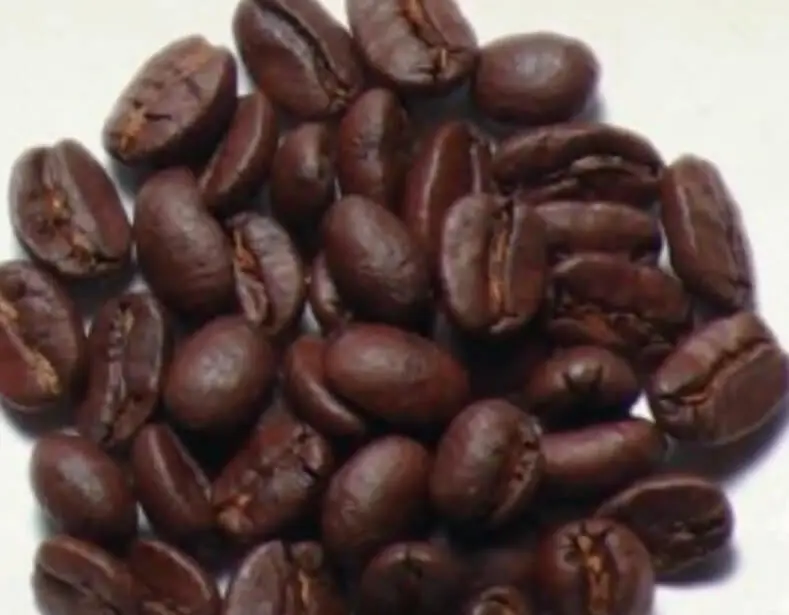
The Bright Side of Medium to dark beans
The higher temperatures at this stage of roasting remove practically all of the acidity, enhance caramelization, and gives the coffee a bittersweet aftertaste.
Common Profiles of Medium-Dark type of coffee Roasts Beans:
- Full City
- Light Espresso
- After Dinner
- Continental
- Light French
- Viennese
4. Dark Roasts Coffee Beans with ultimate Guide
Dark roast coffee, perfect for Starbucks lovers and espresso enthusiasts, undergoes high-temperature roasting until reaching 464-482°F or beyond the second crack.
The beans turn dark, releasing oils, resulting in a powerful, somewhat bitter flavor with reduced acidity and caffeine.
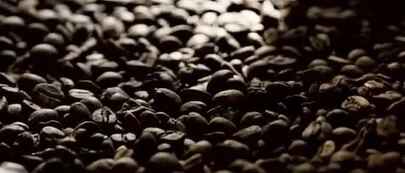
Dark roasts have a more robust body and richer taste due to the extended roasting process, which typically results in a buttery finish that many coffee drinkers appreciate, particularly in Europe.
The Bright Side of Dark coffee roasts beans
Dark roasts, while masking origin flavors, offer a bold, rich body with a satisfying, buttery finish.
The extended roast process yields a distinct European favorite, delivering a unique and robust coffee experience that many cherish.
Common Profiles of Dark type of coffee Roasts Beans:
- High
- Spanish
- Italian
- European
- Dark
- French
- Neopolitan
- Espresso
Various types of Coffee Roast Process:
| Coffee roasting is a captivating blend of science and art. |
Coffee Roasts ultimate guide:
We roast coffee beans in three stages which are:
- Drying,
- Browning,
- Development of Coffee Roast
I’ll go through the basics of roasting and commercial roasting here.
1. Drying the coffee bean:
To ensure quality, I maintain a coffee bean’s ideal humidity of 8-12%.
Drying comes first before roasting, as I load the batch into a heated drum. With an internal air temp of 500°F, the 4-8 minute drying stage retains moisture while avoiding scorching.
During the initial 5 minutes, it’s crucial to gradually raise the temperature without overdoing it.
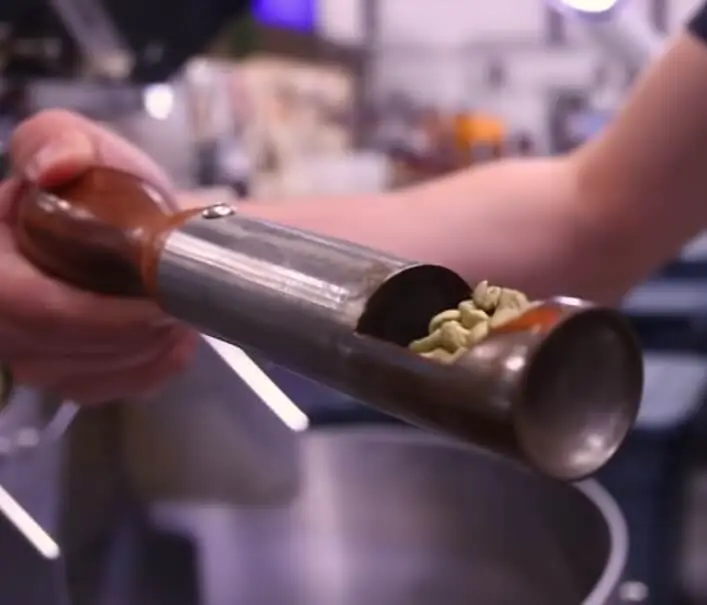
Witness the bean’s transformation from green to yellow, as the aroma evolves from fresh grass to hay in this ultimate coffee roasting guide.
2. Browning coffee bean:
In the next 5 minutes, as the temperature hovers between 300F and 350F, coffee’s transformation kicks in.
Here, the magic happens as fragrance precursors evolve into delightful aromas. This is when the roast’s pace gently slows down, a phase some roast masters including me, prefer for richer flavors.
This browning stage, triggered by the Maillard reaction, blends sugars and amino acids, creating flavorful melanonids and a transition from yellow to light brown at around 160°C.
The result? Coffee that smells a bit like freshly toasted bread. It’s a fascinating journey of flavors.
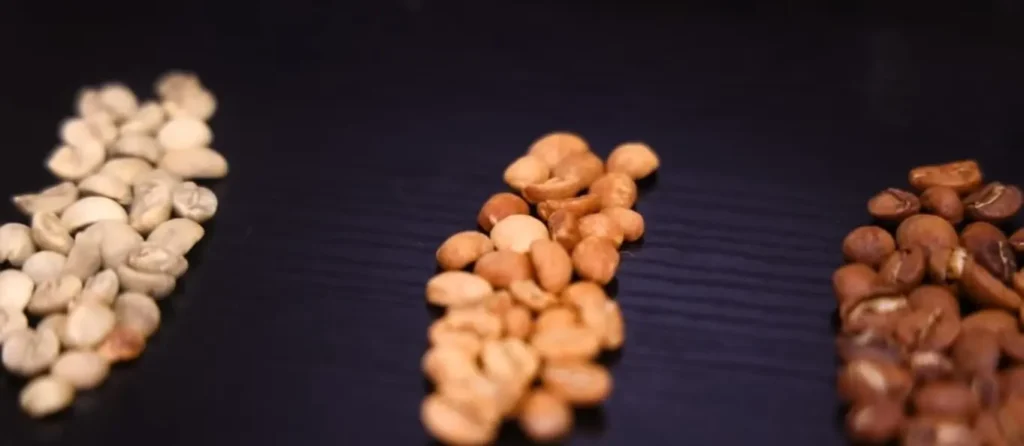
| Temperature (°F) | Coffee Transformation |
| 300-350 | Fragrance to Delightful Aromas |
| 160°C (320°F) | Yellow to Light Brown |
3. Development of Coffee Roasts:
After the browning process is complete, the coffee will start to explode. Coffee beans generate popping sounds when they reach a specific temperature because they contain natural moisture, sugars, and other chemical ingredients.
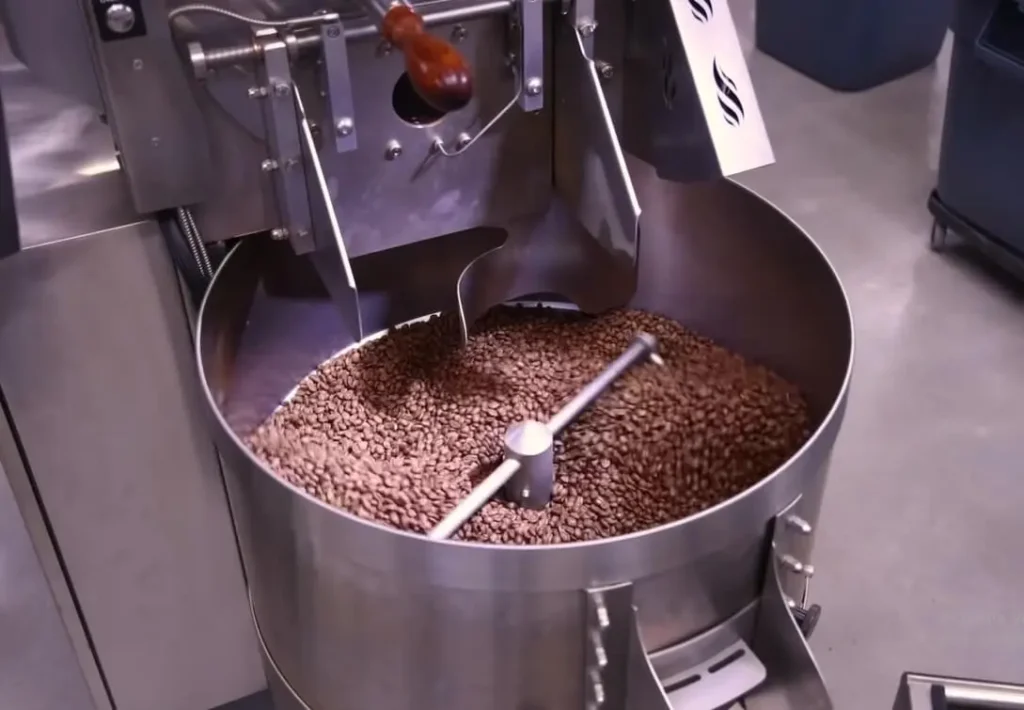
The process becomes exothermic at first, and the “first crack” happens at about 360°F.
Coffee Roast degree:
The roast degree is some of the most crucial indications with the roast since it allows roasters to measure the color – and hence the taste. Roasters typically try to bring out the natural tastes of coffee and determine the degree of roasting.
| Roast Degree | Lighter Coffee | Darker Coffee |
| Characteristics | More acidic, fruity | More bitter, smoky |
| Flavor Profile | Prominent fruitiness | Complex (chocolate, etc.) |
| Reason | High organic component | Organic molecule degradation |
Coffee Roasting time:
Each coffee has a certain finishing temperature and roasting duration, as well as a total roasting time and time for each stage. It’s crucial to achieve the proper balance here.
| Roasting Time | Fast Roasting | Slow Roasting |
| Characteristics | Ideal fragrance, risk of burning | Less acidity, less acidic |
| Benefit | Rich coffee aroma, adjust roast profile | Reduced acidity, a good choice |
Conclusion:
Roasting is a heating procedure that turns green coffee beans brown, changing the flavor and fragrance. However, the longer it is roasted, the less caffeine and acidity it has. With greater knowledge of the many varieties of coffee roasts, this thorough guide will help you in identifying various types of coffee roasts along with ultimate guide


